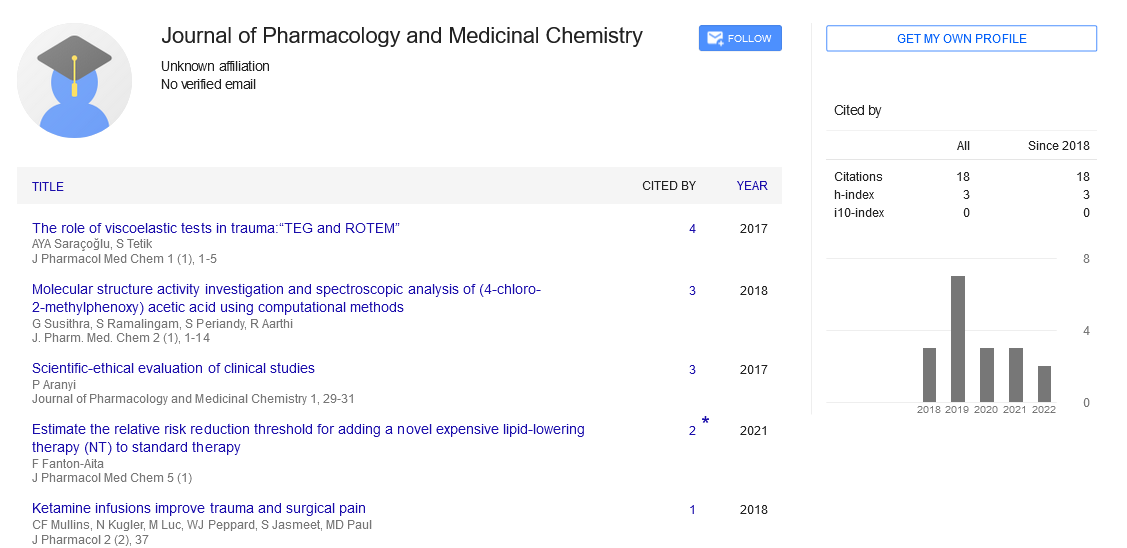Challenges in Medicinal Chemistry
Received: 08-Nov-2017 Accepted Date: Nov 09, 2017; Published: 13-Nov-2017
Citation: Dahms HU. Challenges in Medicinal Chemistry. J Chem Bio and Med Chem. November-2017;1(1):3.
This open-access article is distributed under the terms of the Creative Commons Attribution Non-Commercial License (CC BY-NC) (http://creativecommons.org/licenses/by-nc/4.0/), which permits reuse, distribution and reproduction of the article, provided that the original work is properly cited and the reuse is restricted to noncommercial purposes. For commercial reuse, contact reprints@pulsus.com
The number of approved drugs for the market is decreasing in recent years and calls for more effective methods to discover a higher number of successful compound candidates. Medicinal chemistry at the forefront is challenged here but also since it provides the most time-consuming step in the drug discovery process. Medicinal chemistry has made transformations through several technological innovations in recent years in a scenario of an increasingly complex societal, academic, medical, and corporative environment for drug discovery. In the last decade methodologies have been largely replaced from an individual scheme to an interdisciplinary, team-oriented approach. Here, novel computational tools speeded up drug developments that promissing lead compounds could be produced. Other new approaches were helpful, e.g. OMICs approaches in modern life sciences that include genomic, transcriptomic, proteomic, metabolomic information with reference bases that need to adapt computational chemoand bioinformatic tools. The improvement of methods is also followed by property based structural design of molecules, multidimensional optimization, and computational as well as experimental property analysis in high throughput. The sequencing of the whole human genome and the genomes of many other organisms provided several new genetic and evolutionary insights and targets for pharmaceutical sciences. New drug discovery technologies allowed to increase the number of drug candidates and leads can now be optimized fast in terms of drug potency by medicinal chemists. However, to improve the kinetic, metabolic, and toxicological properties of compounds remains time-consuming and even impossible in several cases. A way out would be the high-speed preparation of analogues through more intensive work on the design of scaffolds and the development of new technologies for automated synthesis. The above depend on the contribution from areas like in silico modeling, cheminformatics, and bioinformatics. Here a profound understanding of the physicochemical characteristics of a multi-dimensional molecule is warranted that should function in the context of human physiology and disease. Medicinal chemists are as yet mainly considering "how to synthesize?" rather than "what to synthesize" in order to cure a particular disease. A transition from a trial-and-error approach to a predictive approach by new ways of targeted drug design has to be done that considers the metabolic functioning of human cell targets. In the future, medicinal chemistry has to turn even more too chemical biology where molecular events are studied as pathophysiological processes. Drugs have to be designed towards the molecular targets of the diseased cells and tissues. We have to obtain knowledge about the molecular base of metabolism, pharmacokinetics and about the physiological effect of compounds. This interplay is getting an increasingly large, multidisciplinary data pool based on OMICs approaches and in silico chemistry. Promising future drug discovery will only be possible by the understanding and technological transfer of the molecular principles of drugs with their underlying metabolic transitions, pharmacokinetics, and toxicology.





